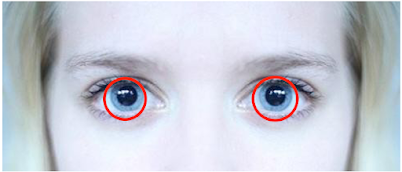
Chronic Fatigue Solved the Adrenal Connection (Updated for 2025)
- Natural Healing
- April 17, 2023
- No Comment
- 35 minutes read
Chronic Fatigue Solved the Adrenal Connection
By Dr. Jack Herbert
Chronic Fatigue Syndrome is an illness that is as perplexing as it is devastating. Some of the symptoms are:
Treatment is based on the following:
A. Stress Reduction B. Nutrition C. Bio-Energy Medicine
- Lack of energy and vitality
- Rapid heartbeat and/or fluttering
- Low body temperature
- Poor memory
- Anxiety
- Muscle pain
- Muscle twitching
- Migraine headaches
- Digestive disturbances
- Irritability insomnia
- Shortness of breath
- Episodes of body shaking (tremors) with anxiety
- Stress maladaptation (low physical and mental-emotional stress tolerance)
- Low immune function
- Post-exertional malaise (PEM) (a worsening of symptoms following even minor physical or mental exertion)
- Orthostatic intolerance (symptoms worsen when a person stands upright and improve when the person sits or lies down)
A. Stress Reduction
All types of stress must be considered when treating this illness such as:
- Mental Stress (It’s important to understand that the adrenal glands play an important role not only in physical stress tolerance but in mental stress tolerance as well. This is the reason that so many things bother people with CFS—it’s because their mental stress tolerance is low, so much so that what’s not even a stressor to most people can be a major stressor to people with CFS. When the adrenal glands are fully recovered, both physical and mental stress tolerance return to normal. Reassurance is helpful because it lowers mental stress.)
- Environmental Stress: Allergens such as:
- Pets (If you are allergic to a pet, you need to get rid of it. Your pet could be making you very sick. Have someone keep your pet for one month to see if there is a positive change in the way you feel.)
- Molds (If you have a mold problem it must be cleaned up and any moldy items thrown away; check basements, bathrooms, sinks, and drains).
- Dust Mites
- Pollen
- Among the features of this syndrome is a high prevalence of allergy. Atopic conditions co-exist with Chronic Fatigue in over 50% of patients studied. (3)
- Temperature (temperature should be increased or decreased to tolerance).
- Noise (noise should be reduced to tolerance)
- Food Allergies (if you are found to be allergic to specific foods, you should eliminate them from your diet as much as possible.).
- Pain (Acupuncture can be helpful in alleviating the muscle pain associated with this illness. Chiropractic treatment may also be helpful.).
- Electromagnetic Fields (such as electric blankets, stereo headphones, etc.)
- Exercise: When the patient with CFS is in the early stages of recovery they are not going to be able to exercise. In fact, exercise will make them worse. However, as the patient recovers and gains strength they should reach a point where they will be able to start exercising. When they do they should avoid strenuous exercises such as weight-lifting, push-ups, leg lifts, etc. These types of exercises put too much stress and strain (which is medically referred to as intrathecal pressure) on the adrenal glands and can cause a major setback during recovery and we want to avoid this if possible. Walking to tolerance is the best exercise. Light stretching is also good. As a rule, do what your body will allow you to do but avoid the strenuous types of exercises mentioned above.
In her book, “Confronting Mitral Valve Prolapse Syndrome” by Lyn Frederickson, MSN (which we will be discussing later on) Ms. Frederickson does a good job illustrating which exercises are safe to do and which exercises should be avoided during recovery.
Remember, you don’t want to be lifting anything heavy or helping anyone lift anything heavy, push or pull anything heavy, no leg-lifts, sit-ups, push-ups, or lifting any weights. If you do something too strenuous, you can still completely recover but it can make recovery more difficult and take longer, and as I said before we really want to avoid this if we can.
B. Nutrition
Diet is very important. I am not asking that you make drastic changes in your diet, but I am recommending that you include the following in your diet. Tuna Fish is a very good source of protein. Try to eat a Tuna Fish sandwich two or three times a week. Other fish, such as Flounder, Sole, Salmon, and Catfish are also good sources of protein and contain low levels of mercury. I recommend eating chunk light tuna fish because it has less mercury than Albacore or solid white tuna.
Beans are another good source of protein, try to include beans in your diet four times a week or more (string beans, lima beans, baked beans, kidney beans, etc.). Have a bean burrito at your favorite taco stand.
Try to include raw vegetables such as celery and carrot sticks in your diet every day. Buying a juice extractor is a good idea. (Juice celery, carrots, spinach, parsley, etc.). If you do not have access to a juice extractor substitute three 5.5 OZ (163 ml) cans of V8 juice a week. Try to eat a banana every day.
It is all right to include meat, eggs, and poultry in your diet. Try not to eat red meat more than twice a week, but if you do eat red meat more than twice a week don’t worry about it. Also, try to include raw almonds and raw walnuts in your diet on a daily basis. Other nuts such as pecans, macadamia nuts, and Brazil nuts are good too. Nuts are an excellent source of Omega 3 oils as well as other nutrients. Also, include one tablespoon of extra virgin olive oil three times per week in your diet. (You can put it on a salad, or bread, or take it right off the spoon.)
Also, I recommend a green superfood supplement such as Green Magma (original formula). Stir one tablespoon into four to six ounces of water every day.
Avoid stimulants such as caffeine and ginseng.
Many people with chronic fatigue are sensitive to drugs and alcohol. If you are sensitive to drugs and/or alcohol, you should avoid them as much as possible.
I recommend the following nutritional supplements to be taken daily:
- Between 50 and 100 mg of B complex vitamins. You may have heard B complex referred to as Stress B complex or Stress tabs. That’s because B complex and other nutrients are essential for corticosteroid production and the adrenal glands primarily produce corticosteroids.
- Also, take an additional 500 mg of Vitamin B5 (Pantothenic Acid)
- Approximately 30 mg of Zinc
- 10 mg of Manganese
- 400 mg of Magnesium
- 10,000 IU of Vitamin A
- 300 mg of Calcium (Citrate)
- 1000 to 2000 mg of Vitamin C
Additional supplements are not essential but are important and should be taken daily
- Selenium 200 mcg
- Chromium 200 mcg
- Vitamin D 400 IU
- Natural Vitamin E 400 IU
- Molybdenum 100 mcg
- Boron 2 mg
- Potassium 99 mg
- Sublingual B12 500 mcg
Taking a Kelp tablet every day is a good idea unless you are allergic to Kelp. If you are a menstruating female, you should probably be supplementing iron. However, there are some contraindications for taking iron. Ask your healthcare provider if it is okay to supplement with iron and how much to take.
Vitamins and minerals can be taken individually or in a multivitamin multimineral formula. Two multivitamin multimineral supplements I like are:
- Pure Encapsulations Nutrient 950-A without copper and with or without iron depending upon whether you need iron or not. (take as directed) [pureencapsulations.com 1-800-753-2277]
- Freeda Vitamins. I like their Ultra Freeda Formula available with or without iron depending upon whether you need iron or not. It’s hypoallergenic and copper-free. (take as directed) [freedahealth.com 1-800-777-3737}
Fresh air and Sunlight:
Direct exposure to sunlight can increase the body’s vitamin D supply as well as offer other health benefits. If or when you are strong enough to go outside, try to get direct sunlight exposure several times a week (approximately 5 to 10 minutes for people with lighter skin tones, and up to 25 minutes for people with darker skin tones). Between 9 a.m. and 3 p.m. is the best time for sun exposure to obtain vitamin D. Some authorities feel that early morning sun exposure is more beneficial than sun exposure later in the day. Wear a hat to protect your ears and face from sunburn. When you’re finished sunbathing, or if you don’t want to sunbathe, you can sit in the shade and get the benefits of daylight for your eyes and the benefits of breathing fresh air. Never look directly into the sun. The best time of the year to sunbathe is late spring and early summer. Don’t sunbathe if it’s too hot outdoors and remember to sunbathe in a non-burning safe fashion. It’s not essential to sunbathe in order to recover from CFS. So, if you don’t feel up to going outside, don’t worry about it. Also, when you’re inside and you feel up to it, open the windows and the blinds to let the fresh air and sunlight in. (Don’t strain yourself, if the windows are too hard to open and close, then ask someone to do it for you.)
For more information on the benefits of fresh air and sunlight, read my article, “The Health Benefits of Fresh Air and Sunlight” In addition, the book “The Healing Power of the Sun” by Richard Hobday Ph.D. contains a wealth of information, including how to sunbathe safely.
Because there are some contraindications to direct sunlight exposure, such as taking certain drugs, discuss your medications, skin type, and what is best for you with your doctor and/or a dermatologist.
C. Bio-Energy Medicine
I find the Cayce Wet Cell to be helpful in the treatment of Chronic Fatigue Syndrome. It appears to have a regenerating effect on the adrenal glands.
I recommend using the wet cell for approximately 45 to 60 minutes a day. This should be done every day until the patient is fully recovered. If you like you can use the wet cell for 45 minutes a day five to six days a week and probably still get good results.
After two to three months of treatment with the wet cell, improvement should be noticed. Continue using the wet cell until completely recovered, then discontinue using it. Complete recovery may take up to six months or longer, depending on where you are in recovery. Keep in mind that there are different levels of depletion with this illness. Some people are functioning at a low level, while others are living a chair-to-bed existence. The more depleted you are, the longer recovery will take. Six months of treatment may seem like a long time and a lot of treatment, but it is a lot faster than the several years or longer that recovery may take otherwise.
The electrical energy emitted by the wet cell appears to be compatible with the human energy field (also known as the human biofield). In other words, the electrical energy emitted by the wet cell is apparently the same or similar to the vital force or subtle life energy that is central to healing and regeneration. This subtle life energy is often referred to as qi or prana, as well as by other names.
The wet cell causes no ill effect.
Since the human body can act as a transducer of the human energy field, if you do not have access to a wet cell, try substituting Reiki or other Hands-On healing methods. This should be done for the same treatment time as the wet cell, approximately 45 minutes a day, every day until completely recovered. As with the wet cell, complete recovery may take up to six months or longer. Since having reiki treatments on a daily basis can be costly, you may want to consider having a loved one or close friend learn how to give you reiki treatments. You should be able to find a reiki master online that teaches reiki level 1. You may even be able to find reiki level 1 instruction on Youtube.
If you do not have access to a wet cell or reiki treatments, try practicing medical qi gong. The Wet Cell is available at Baar Products. (l -800-269-2502) www.baar.com
Use the Gold Chloride Solution. 1 grn/oz. 3 oz. bottle
Use the Willow Charge kit.
For more information on Energy Medicine, read “The Body Electric” by Robert O. Becker, M.D. Dr. Becker was a pioneering researcher and leading expert in the field of biological electricity and regeneration. He was twice nominated for the Nobel Prize. He also authored the book “Cross Currents.”
For more information on CFS read “Chronic Fatigue Unmasked” by Gerald E. Poesnecker, N.D., D.C. Dr. Poesnecker’s book offers a lot of good information on CFS however, I feel his use of glandulars may not agree with some people. I also feel his energy medicine modalities may not be as beneficial as the Wet Cell. I feel the Wet Cell is far better and can be used at home.
Claire Weekes, author of “Hope and Help for Your Nerves” and “Peace from Nervous Suffering,” provides helpful advice on managing the early stages of anxiety that frequently accompany CFS, or adrenal fatigue syndrome (AFS). Her books also contain additional useful information about CFS.
In her book “Confronting Mitral Valve Prolapse Syndrome” by Lyn Frederickson, M.S.N., Ms. Frederickson refers to CFS, or AFS, as Mitral Valve Prolapse Syndrome because of the heart symptoms that are sometimes associated with it. I believe she is actually describing CFS. As I said before, I believe CFS is an endocrine disorder, specifically an adrenal disorder, and endocrine disorders can cause heart symptoms. All of the symptoms, including the heart symptoms, usually clear up when the patient is fully recovered.
A note about the autonomic nervous system’s (ANS) involvement in this illness
The autonomic nervous system (ANS) consists of the sympathetic nervous system (SNS) and the parasympathetic nervous system (PSN). Earlier in this article, I referred to this illness as a milder or subclinical form of adrenal insufficiency with sympathetic manifestations. The mechanism of these sympathetic manifestations is most likely as follows: In the absence of adequate adrenal hormones, the body struggles to respond appropriately to stress, which results in a compensatory overreaction of the SNS. This overreaction manifests as increased heart rate, heart palpitations, sweating, pupil dilation, tremors, anxiety, enhanced reflexes and hearing, and other symptoms associated with the sympathetic “fight or flight” response. Because of these sympathetic manifestations, many people mistakenly believe that this illness is a dysfunction of the ANS known as dysautonomia. However, in my opinion, there’s nothing wrong with the ANS; it is functioning properly. The body is simply reacting to inadequate production of adrenal hormones by activating the SNS. When the adrenal glands are completely recovered, adrenal hormone production is sufficient, and the body can better regulate the SNS. A well-functioning adrenal system helps ensure that the SNS is activated only when necessary, leading to the elimination of symptoms and improved health and well-being.
The importance of diet for adrenal health:
Diet plays a crucial role in maintaining adrenal health, which is vital for overall well-being and stress management. A balanced and nutrient-rich diet, along with nutritional supplements including vitamin C, B vitamins, magnesium, and zinc, is necessary to support adequate adrenal hormone production and prevent adrenal fatigue and dysfunction. As stated by Adele Davis, author of “Let’s Get Well,” “How well each of us copes with stress depends on the adequacy of our diet both before and during the stress itself.” (7)
I enclosed a photo of a baby with the sign dilated pupils at the end of this article. This is evidence of a compensatory overreaction of the SNS due to inadequate adrenal hormone production. I previously mentioned the importance of adequate nutrition for sufficient adrenal hormone production. Since people can be born with inadequate adrenal hormone production (like the baby in the photo), good nutrition is even more important for them than for the general population. If this baby’s nutritional needs are met, then adrenal hormone production improves to sufficient levels, and the body can better regulate the SNS, leading to improved health and the elimination of pupil dilation.
People with CFS usually feel better when they consume salt. When sodium levels rise due to increased salt intake, the body typically reduces aldosterone production as a compensatory mechanism to prevent excessive sodium retention. (6) When the production of aldosterone, an adrenal hormone, is reduced, adrenal stress is reduced. Keep in mind that excessive salt consumption can have a negative effect.
Many people with CFS feel dizzy or lightheaded when they stand up. This is most likely due to falling blood pressure due to adrenal dysfunction. According to the Cleveland Clinic, the adrenal glands release hormones that “help control blood pressure, heart rate, sweating, and other activities that are also regulated by the sympathetic nervous system.“(7) When the adrenal glands are fully recovered, blood pressure, heart rate, and other activities should return to normal.
A note on post-exertional malaise (PEM)
Post-exertional malaise (PEM) is the worsening of symptoms following even minor physical or mental exertion. It is a core symptom of CFS.
Some examples of minor physical exertion (or minor physical stress) that can cause PEM are:
- Shopping
- Doctor’s appointment
- Driving
- Riding in a car
- Going to a concert
- Walking
- Walking up stairs
- Social interaction
Some examples of minor mental exertion (or minor mental stress) that can cause PEM are:
- Watching TV
- Talking on the phone
- Listening to music
- Reading a book
- Doctor’s appointment
- Driving
Additionally, emotional stress such as crying, worrying, being upset or angry with someone or about something can cause PEM.
Many people with CFS describe it as a tortuous illness. They live in a world of anxiety; they don’t feel well; their memory is impaired; their thinking process is slowed; and they are unable to tolerate stressors that, for most people, are not stressors at all. In addition, they are dealing with an illness that family, friends, and most doctors don’t understand. All of this creates more stress, which can cause further depletion, which can create more stress, which can lead to a vicious cycle where the illness actually feeds on itself. Living in these conditions can be difficult, to say the least. To recover, drastic lifestyle changes have to be made. This includes activity management, or pacing, which we will discuss next.
While the patient with CFS is in recovery, they have to learn how to pace themselves in order to avoid and limit setbacks. In order to pace yourself, the main thing to remember is to listen to your body and do what it will allow you to do. For the patient with CFS, it feels like they are on a roller coaster. Two steps forward, then one step back, until they are completely recovered. As the patient recovers and gains strength, they should be able to do more and more until they are completely recovered.
Other often over-looked health disorders that can cause fatigue-like symptoms are Subclinical Hypothyroidism, Yeast or Fungal Overgrowth (read “The Yeast Connection” by William G. Crook, M.D.), Viral and/or Bacterial disorders, Parasites, Untreated Lyme disease, Iron deficiency, and Iron deficiency Anemia.
As time goes by things change so some of the things I recommend in this article may not be available such as the A.S.I. test, books, and maybe even the Wet Cell. Do the best you can with what you have available. Keep persevering, try to be optimistic, and know that you are not alone, eventually, in time you should completely recover.
If you have any underlying medical conditions, consult your healthcare provider.
Click on the link below to view the video of this article.
Watch Video


REFERENCES:
(1) Mark A. Diametric, et al. J. Clin. Endocrinol, and Metabl. 73:1224 (1991)
(2) Born, et al. Biol. Psychiatry. 2..141591986).
(3) Straus S., et al. J. Allergy & Clin. Immunol. 81:79 (1988)
(4) “Let’s Get Well” Adelle Davis page 27 Copyright 1972 Published by BN publishing
(5) https://www.labce.com/spg939445_blood_glucose_and_hormonal_control.aspx
(6). https://www.ncbi.nlm.nih.gov/books/NBK470339/
(7) https://my.clevelandclinic.org/health/body/23005-adrenal-gland
Look under the heading “What are the parts of the adrenal glands”



